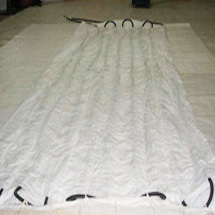Benefits of Using Bulk Container Liners
Bulk Container liner for Flexitanks have been quite popular especially in the transportation and shipping industry for almost 4 decades now. The continued use of bulk container liners has also changed the way business is carried out in the logistics’ supply chain. Their optimistic impact in the industry affects cost-efficiency, sustainability, customer satisfaction, rules and regulations, and more.
Mentioned below are the benefits that bulk container liners add to enhance bulk product handling processes:
- Enhanced productivity: Bulk products packed in bulk container liners are dealt with automated equipment that lessens the time it takes to load and unload a maritime container. Notice that savings are also applied to costs for this cause as manual labor hours and injury risks for the staff are significantly reduced.
- Packaging cost savings: It has been proved that supply chain managers save money in packaging each time that they select container liners over Big Bags to pack bulk products for transportation.
- Lessened product waste: Whether a bulk container is loaded horizontally or vertically, the container liner keeps the whole product cargo securely enclosed at each stage of the process – unloading, loading, storing, and transport. Based on the physical characteristics of the bulk solid, some particles can possibly fall out or spread in the air as it is loaded or unloaded. But, the rate at which that occurs is considerably lessened with container liners.
- Lessened product contamination: Bulk Container Liners are built sturdy to prevent the potential damages from foreign agents and dampness that could compromise the veracity of bulk solids transported and delivered.
- Simpler inventory control: Container liners assist to enhance the supply chain process as they streamline the loading and unloading steps. This has a straight contact on the requirement for inventory as dealing with bulk solids during the loading and unloading processes requires less time, it also lessens the need to keep inventory of products held in storage. Remember the inventory and warehousing also has pessimistic effects, for instance increased opportunity for products to blemish or be spoiled in other ways. That type of loss interprets into profits going down the drain.
- FDA-approved for food handling: The FDA has approved container liners for food handling in the United States. The FDA necessitates that the container liners be made of tough and hard-wearing LLDPE & LDPE film, or top quality woven HDPE/PP fabrics. This kind of construction can assure that the food commodities packed in the container liner are safeguarded well.
So, now it can be very well understood as to how beneficial it is to use the bulk container liners for the flexitanks.
Get in touch with us call: +91 2662 227 100











